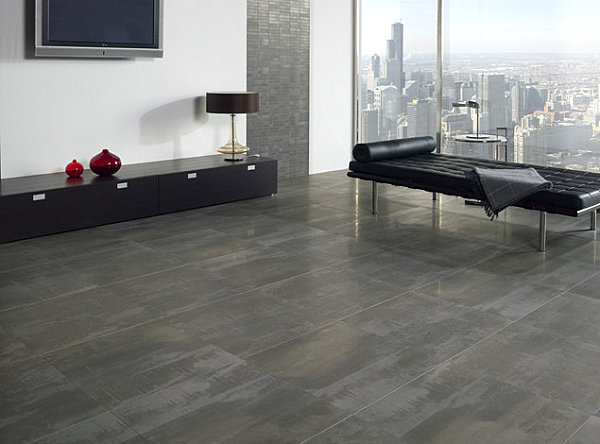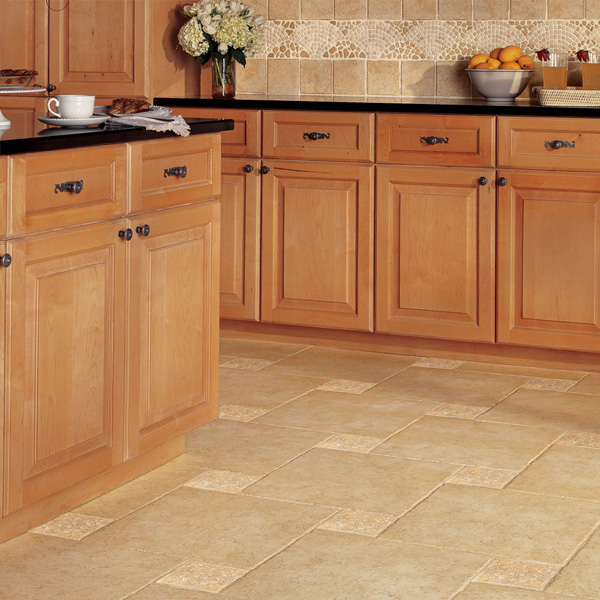Difference Between Glazed and Unglazed Porcelain Tile
Posted By Becky on March 13, 2014
Porcelain tiles are among the most frequently used materials for wall and floor coverings today. More durable than ceramic and completely nonporous, porcelain tiles make a great choice for all areas of the home. In addition to being a durable option, porcelain is also an attractive one. Porcelain tiles are available matt, textured or polished, with or without a glaze. When you select a porcelain tile, consider its application and its style to make the right choice.
Porcelain tiles are made of clay dust that has been compressed under tremendous pressure. The compressed tiles are then fired to extremely high temperatures in a kiln. The result is a durable, low-maintenance material with extremely low water absorption. Porcelain tiles are available in sizes from 1 inch up to 36 inches square and in a range of colours, textures and sizes.
 Glazed porcelain has the same clay body that all porcelain tiles have, but with a glaze or coloured coating on top. Porcelain can be glazed before it is fired, or, for more durability, it can be glazed after one firing before the product is fired again. Glazed porcelain tiles are available in textures and colours that can mimic the look of fabric, leather, ceramic and stone and are suitable for both floor and wall use.
Glazed porcelain has the same clay body that all porcelain tiles have, but with a glaze or coloured coating on top. Porcelain can be glazed before it is fired, or, for more durability, it can be glazed after one firing before the product is fired again. Glazed porcelain tiles are available in textures and colours that can mimic the look of fabric, leather, ceramic and stone and are suitable for both floor and wall use.
Many porcelain tiles are available unglazed, meaning the colour that you see on the surface of the tile is the same colour that goes right through the body of the tile. Unglazed porcelain tiles can be textured to resemble slate, given a non-slip surface, polished to resemble marble or left with a flat, matt finish. Unglazed porcelain tiles can be used on walls and floors and are nonporous even without a glaze on top.
Glazed porcelain has several advantages and disadvantages over unglazed porcelain. The advantages include more colours, textures and styles to choose from. Porcelain can be glazed in one single colour or multiple colours, overlapping one another for new, modern looks. A glazed porcelain tile can have textures and colours not available in unglazed tiles, which can enhance the look of the tile design. The glaze on a porcelain tile can chip, which will expose the clay body beneath the tile. Additionally, if bullnose tiles, or edge tiles, are not available, a bullnose tile cannot be made from the field tile, since to do so would be to remove the glaze from the tile’s edge. Glazed porcelain tiles can also be more expensive than unglazed, due to the extra steps taken in manufacturing.
 Unglazed porcelain tiles have colour that goes straight through the body of the tile. This means the surface can be ground to a high gloss, chipped, cut or bullnosed without changing the colour of the tile. Unglazed porcelain tiles are therefore more durable and suitable for commercial applications, although they provide no advantages in residential settings. Colours and styles may be more limited in an unglazed porcelain tile, since colours and textures are limited to those able to be produced from the clay body itself. Unglazed tiles are typically less expensive than glazed porcelain tiles.
Unglazed porcelain tiles have colour that goes straight through the body of the tile. This means the surface can be ground to a high gloss, chipped, cut or bullnosed without changing the colour of the tile. Unglazed porcelain tiles are therefore more durable and suitable for commercial applications, although they provide no advantages in residential settings. Colours and styles may be more limited in an unglazed porcelain tile, since colours and textures are limited to those able to be produced from the clay body itself. Unglazed tiles are typically less expensive than glazed porcelain tiles.
Comments
Leave a Reply